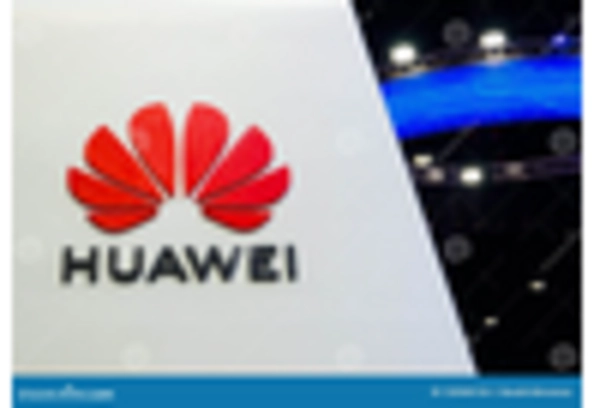Growing Cyber Threat Landscape
The increasing cyber threat landscape is a significant driver for the self healing-networks market. As cyberattacks become more sophisticated, organizations in the GCC are compelled to adopt advanced security measures. Self healing networks can autonomously detect and respond to security breaches, thereby minimizing potential damage. The rise in cyber incidents has led to a greater emphasis on network resilience, prompting businesses to invest in solutions that can adapt and recover from attacks. Recent statistics reveal that cybercrime costs are projected to reach $10 trillion annually by 2025, underscoring the urgency for robust network defenses. This trend suggests that the self healing-networks market will continue to expand as organizations prioritize security and resilience in their network infrastructures.
Rising Demand for Network Reliability
The self healing-networks market is experiencing a notable surge in demand for enhanced network reliability. As organizations in the GCC region increasingly rely on digital infrastructure, the need for uninterrupted service becomes paramount. This demand is driven by the growing adoption of cloud services and IoT applications, which require robust network performance. According to recent data, the GCC's digital economy is projected to reach $100 billion by 2025, further emphasizing the necessity for self healing capabilities. Companies are investing in solutions that can autonomously detect and rectify issues, thereby minimizing downtime and ensuring seamless operations. This trend indicates a shift towards proactive network management, which is essential for maintaining competitive advantage in a rapidly evolving technological landscape.
Advancements in AI and Machine Learning
Technological advancements in AI and machine learning are significantly influencing the self healing-networks market. These technologies enable networks to analyze vast amounts of data in real-time, facilitating quicker identification and resolution of issues. In the GCC, where digital transformation is a priority, the integration of AI into network management systems is becoming increasingly prevalent. Reports suggest that the AI market in the region is expected to grow at a CAGR of 30% through 2025. This growth is likely to enhance the capabilities of self healing networks, allowing them to learn from past incidents and improve their response strategies. Consequently, organizations are more inclined to adopt self healing solutions that leverage these advanced technologies, thereby driving market growth.
Increased Focus on Operational Efficiency
A heightened focus on operational efficiency is driving the self healing-networks market in the GCC. Organizations are seeking ways to optimize their network performance while reducing operational costs. Self healing networks offer the potential to automate routine maintenance tasks, thereby freeing up IT resources for more strategic initiatives. This shift towards efficiency is particularly relevant in sectors such as telecommunications and finance, where network reliability is critical. Data indicates that companies implementing self healing solutions can reduce operational costs by up to 25%. As businesses strive to enhance their operational frameworks, the adoption of self healing networks is likely to gain momentum, contributing to market growth.
Regulatory Compliance and Data Protection
The self healing-networks market is also being propelled by stringent regulatory compliance and data protection requirements in the GCC. Governments are implementing robust regulations to safeguard sensitive information, which necessitates the adoption of advanced network solutions. Organizations are increasingly aware that self healing networks can enhance their compliance posture by ensuring continuous monitoring and rapid incident response. For instance, the introduction of the GDPR-like regulations in the region has prompted businesses to invest in technologies that can automatically address vulnerabilities. This trend indicates a growing recognition of the importance of self healing capabilities in maintaining compliance and protecting data integrity, thereby fostering market expansion.

















Leave a Comment